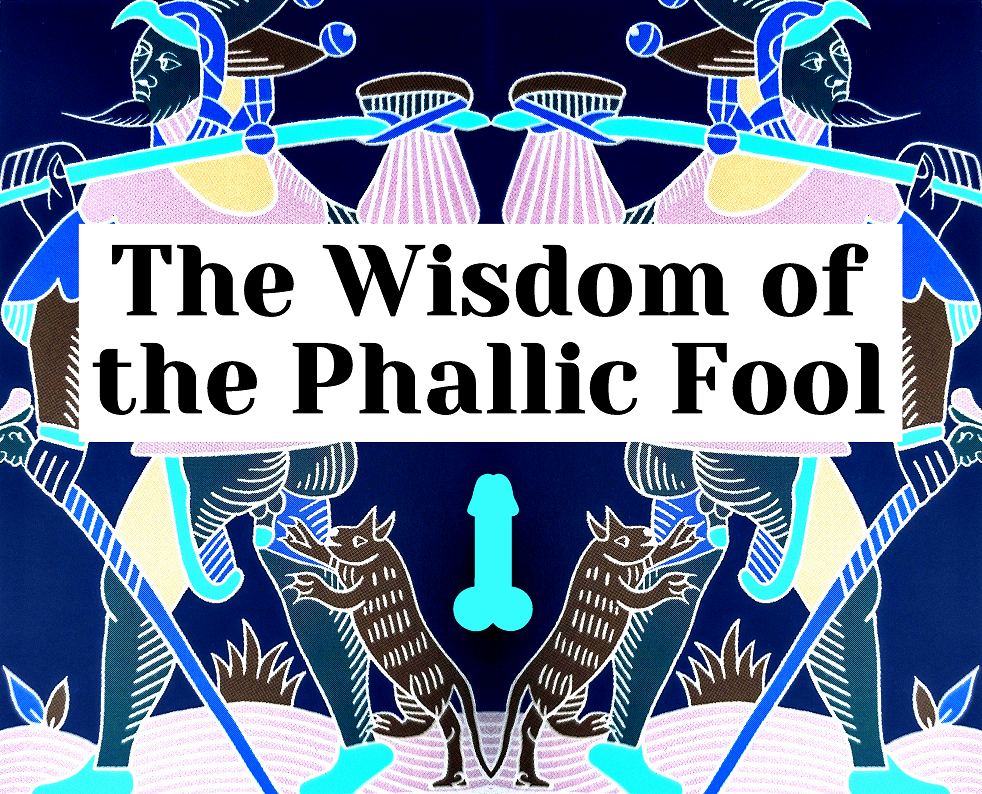
The Wisdom of the Phallic Fool
A few years ago, I planned on creating a video called “The Journey of the Fool’s Penis,” which was to be an exploration of the Fool’s Journey through the Jean Noblet Tarot. The video never came to fruition, but the idea—and that particular card—stuck with me.
The Jean Noblet Tarot was published around 1650 and is usually considered the first Marseille or French-style Tarot. Out of all the cards in the deck, the Fool stands out the most. He wears a jester’s cap and bells, carries a bindle or hobo sack over his shoulder, and a marotte or jester’s staff in his other hand.
But what is most notable is that his stockings are falling down, exposing his butt, penis, and balls. There is a small animal (possibly a cat) behind him, leaping towards his genitals. In subsequent Marseille decks, the animal is pulling down or tearing his trousers. Sometimes his butt is exposed, but there is often an undergarment. The Noblet is the only Tarot de Marseille that I’m aware of that highlights the Fool’s penis.

The concept of the Phallic Fool is actually older than Tarot itself. It is not unusual to find Fools wearing nothing but a jester’s cowl in the medieval period, particularly in illuminated manuscripts such as the Bute Psalter from 13th century France. Here, we see the Fool taunting us, with a very phallic staff placed strategically in front of him. It is an ancient tradition for the Fool to be naked or scantily clad, because he was viewed as rude and improper.
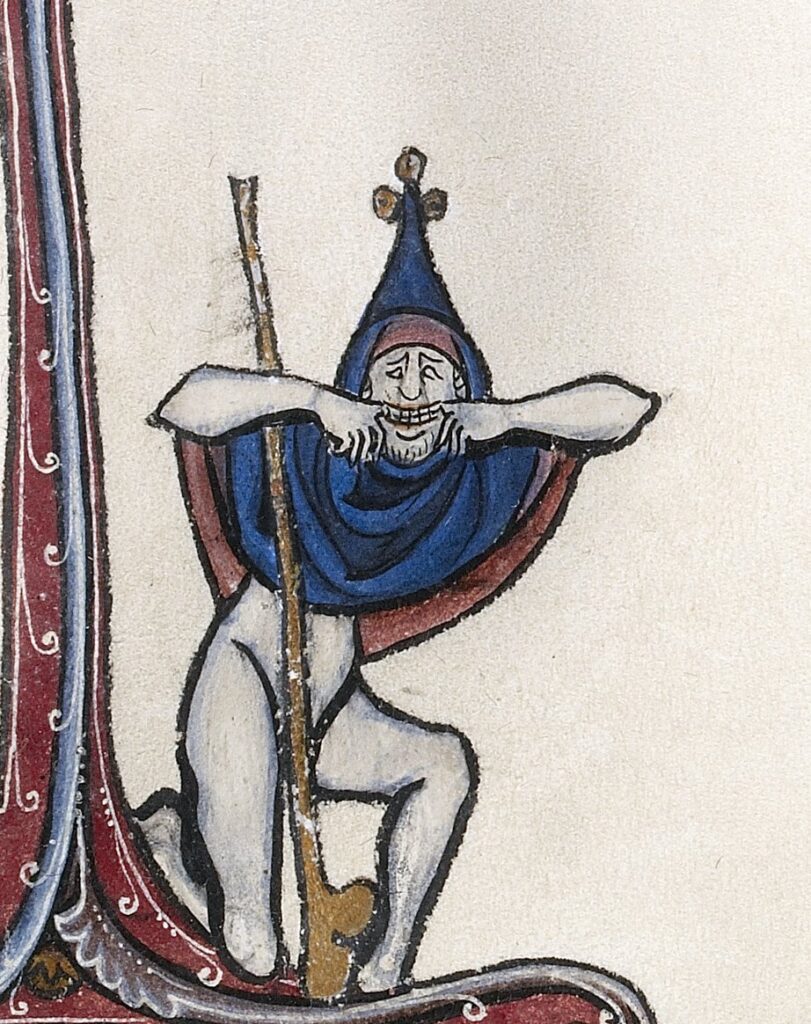
The Visconti-Sforza was created in Milan around 1450, making it the oldest surviving Tarot, or Trionfi (“Triumphs”) as it was called at the time. The Fool has a blank expression on his face and wears feathers in his unkempt hair, symbolizing that he is a “bird brain” or “air head.” He carries a large club over his shoulder and his clothes are shabby. His stockings have fallen to his ankles and are tattered at the bottom, exposing his feet. He is also wearing a loincloth that is slipping down, revealing just a hint of pubic hair. He lazily attempts to pull up his garment, which only further emphasizes this area, his hand almost seeming to point at it.
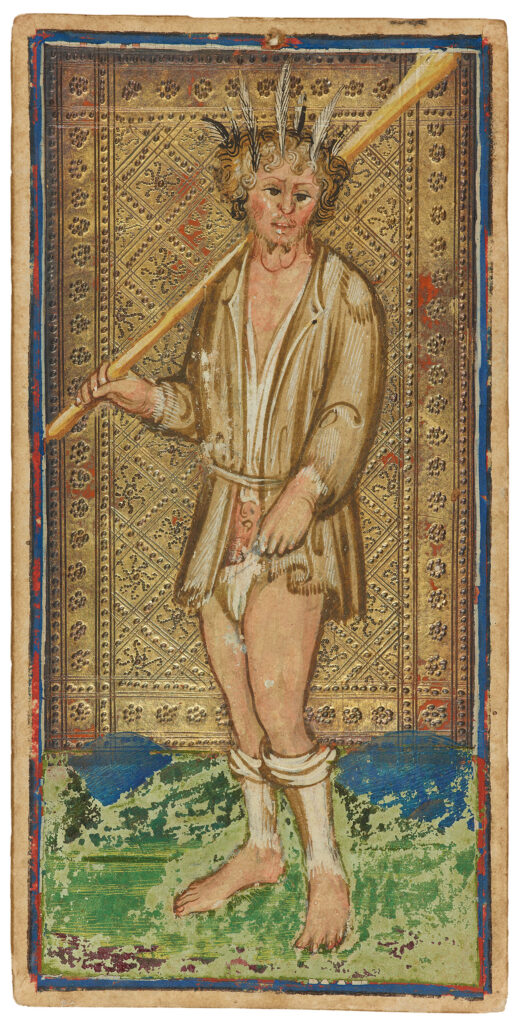
From the 1470s, there are two similar Fools that were probably both created for the House of Este in Ferrara. In the Estensi deck (commonly misnamed the “Charles VI” or “Gringonneur” deck), children are playing at his feet, tugging at his legs, and throwing stones at him to pester him and try to get his attention. But he is completely unbothered by their taunting and continues to amuse himself with his juggling and games. He wears a cap with ass’s ears and a skimpy loincloth that reveals the top of his pubic hair.
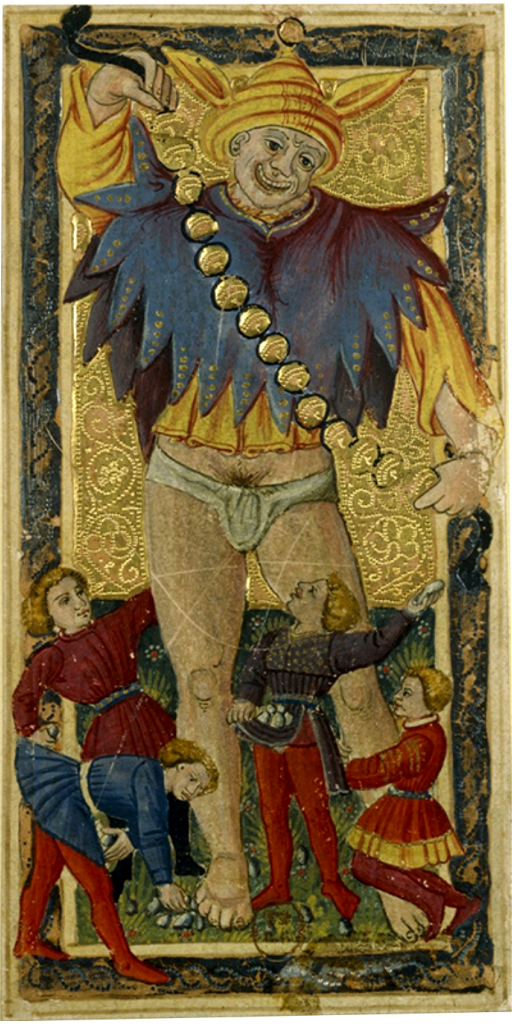
The second, known as the Ercole d’Este deck, shows the Fool dressed similarly, but the children are yanking down his loincloth and poking and prodding at his genitals! This image may seem unsettling to our modern eyes, but what was its significance during the 15th century? To the little ones, the Fool is a curiosity. Who is this silly, careless man wearing strange clothes, and why is he hardly dressed at all?
I have seen some discussion on the internet that these may not be children, but that the Fool is actually a giant. There may be some truth to this, as it was not uncommon in period to portray the central figure as larger than life to emphasize its importance, and surrounding figures are miniature in comparison (Luigi Scapini played with this concept in his Medieval Scapini Tarot in the 1980s). Either way, I’m glad that the small people were soon replaced by the small animal.

From his inception, the Fool was portrayed as a simpleton, someone who is not too bright, and perhaps mentally ill. His appearance is slovenly, immodest, and uncouth. He is someone who exists on the fringes of society, perhaps even a homeless man. This is intertwined with the court jester character, il buffone, the buffoon or clown, who is both a mockery and a disgrace.
The secret wisdom of the Phallic Fool is that people mock him because they are in awe of him, perhaps even jealous. He is a source of wonder, a spectacle that shakes up their monotonous lives and challenges what is deemed socially acceptable. He is crude, unconventional, thinks outside the box, breaks taboos, defies all sense of normalcy and decency, and disrupts the power structure. He appears as a deviant, deranged outcast only to those who cannot see his true wisdom.
He is the unnumbered card, given the value of zero, but that does not mean he is worthless. His worth is outside of all measurements of value. The Fool is both below card I, The Magician, and above card XXI, The World. He is the Wild Card, both the beginning and the end, and the lowest and highest card. The Fool is the ancestor of the Joker in modern playing cards.
Throughout history, the Fool was always losing his pants, and his nakedness was—and arguably, still is—an important part of his iconography. But the tradition of the Phallic Fool culminates with the Noblet, and this is where the dick trail runs cold. The Fool may show a little cheek now and then, but the emphasis on his phallic attributes is long lost.
The purpose of the Fool’s nudity, especially the attention to his phallus, is to confront us with the true nature of our own reality. The lesson of the Phallic Fool is to show us that it is the “normal” people who are the real Fools. Not only do we conceal our bodies in clothing, but we also put artificial barriers on our minds and senses. Putting the Fool’s phallus right in our faces is meant to make us uncomfortable and challenge our perceptions. It serves as a reminder that the social constructs that inhibit us are all manmade illusions.
Although we have yet to see a true revival of the tradition of the Phallic Fool, occasionally we see more male nudity in the Tarot. Female nudity has long been abundant and often eroticized in Tarot art, but on rare occasions, there are Tarot decks that celebrate the male form. There are also increasing efforts to diversify the people represented in Tarot artwork, including all ages, ethnic backgrounds, genders, sexualities, body shapes and sizes, and more.
In modern Tarot decks, if the Fool is naked, it is usually not an important part of his symbolism, but more likely because there is a lot of nudity in that particular deck. Nonetheless, progress is progress. Sometimes it takes one naked Fool to encourage others to get naked too. This is yet another example of the enigmatic presence and arcane wisdom of the Phallic Fool.
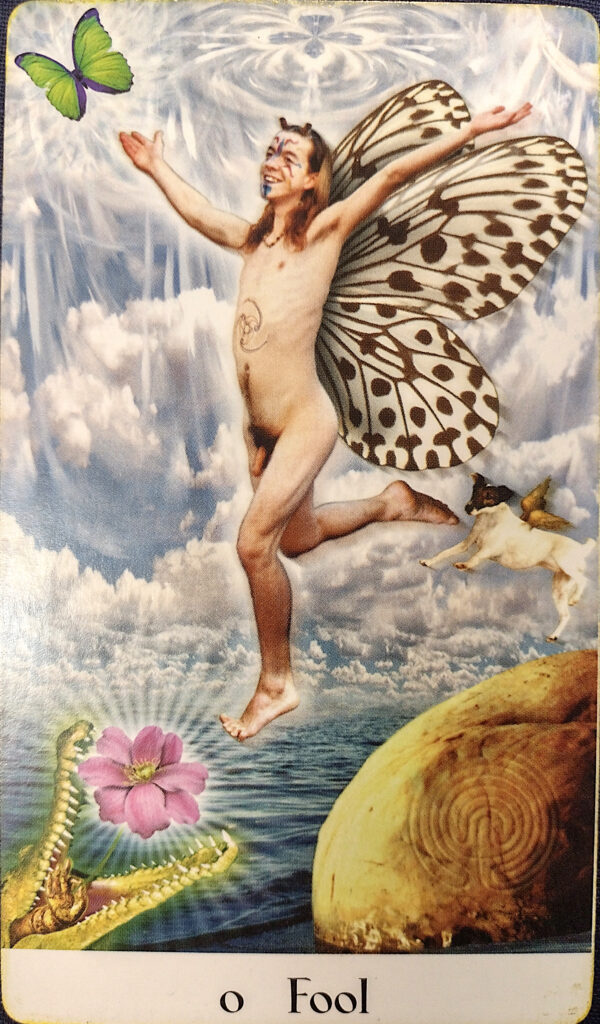
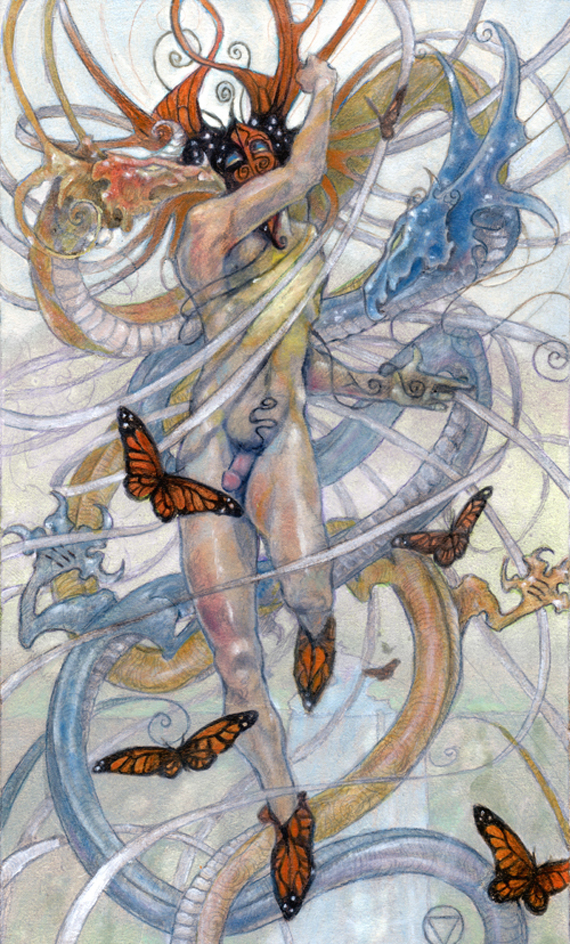
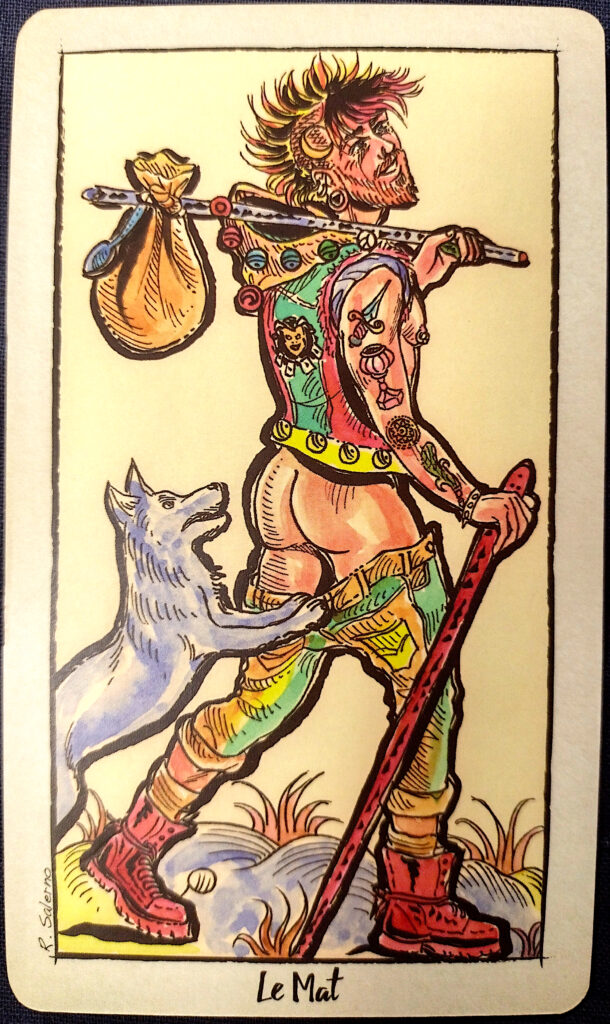
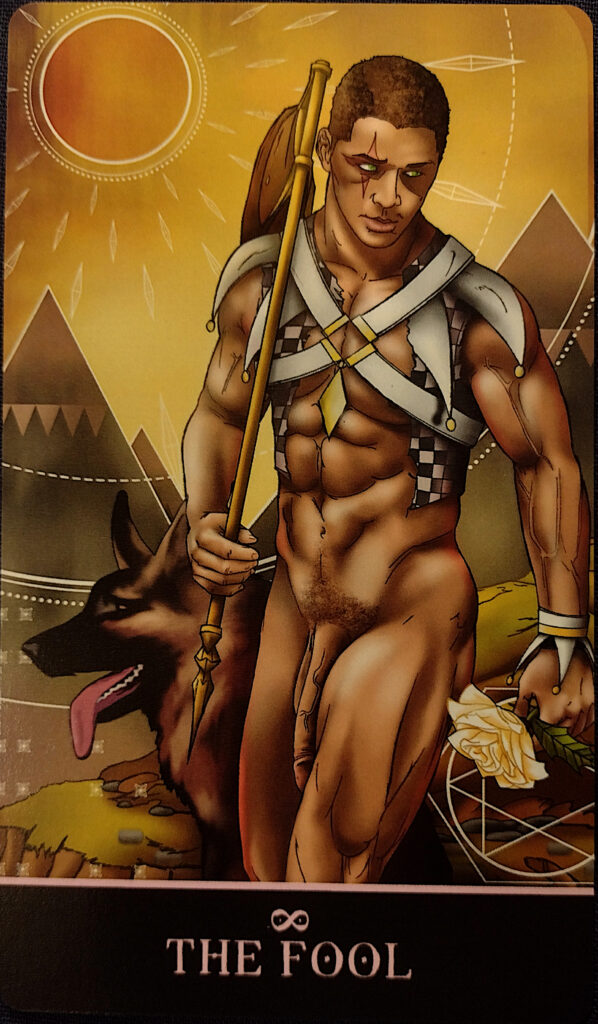
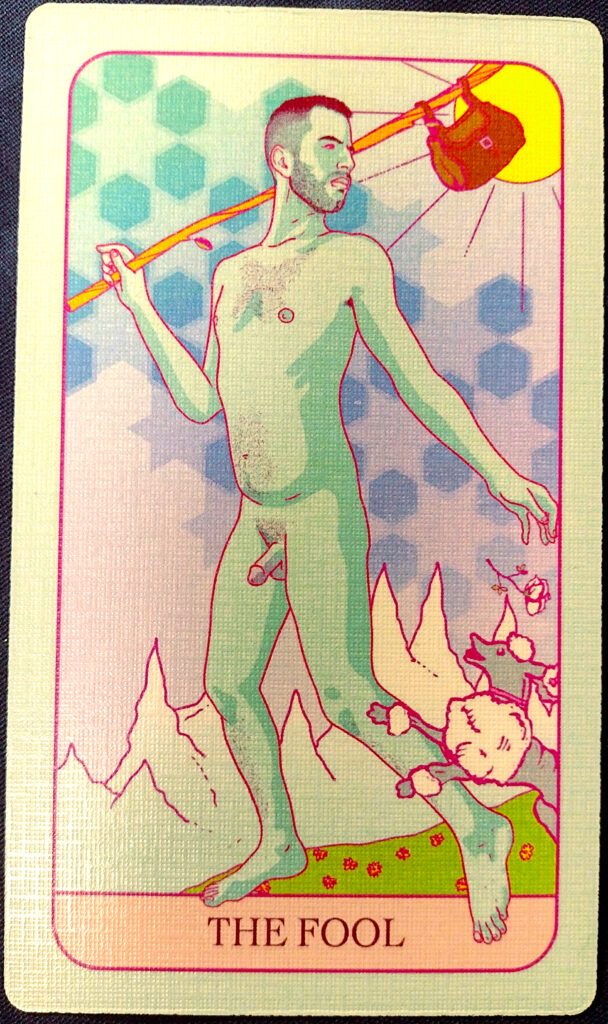

This is a fantastic exploration of an aspect of the tarot that I love. I agree wholeheartedly with your analysis. I have been trying to find ways to balance being a sexual and social outlaw with having to exist in this society ever since my twenties, emulating the fool, without realizing it. This post is a joy to read!